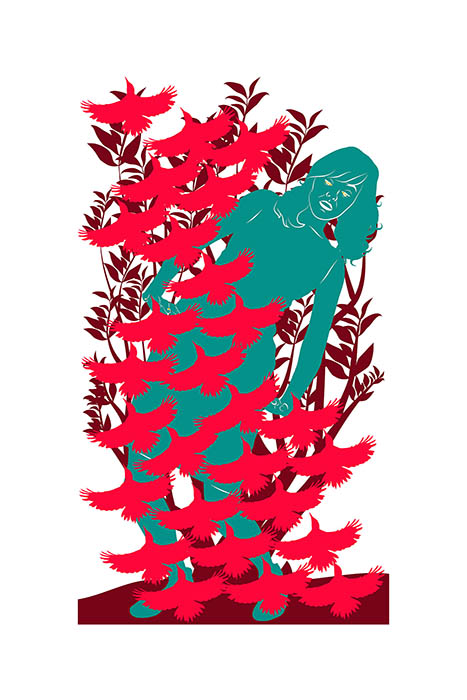TONIA KLEIN
July 10 – September 3, 2016
Tonia Klein's screen prints are influenced by fairy tales and world mythology. She uses these as a basis for sharing personal stories and investigating the role of women throughout history. In this way, her work addresses and represents the social and political spheres of women.
ARTIST STATEMENT
My work is influenced by fairy tales and world mythology. I use these as a basis for sharing personal stories and investigating the role of women throughout history. The images I create usually revolve around a female figure, as she interacts with strange and dream like environments filled with allegorical animals and intricate patterns. The interplay of animal and human elements combine to create new narratives that are both of this world and not.
There are allusions to the domestic, organic, and creative spheres embedded within many of my projects. These kinds of occupations have been historically defined by women, and I often reinterpret these endeavors within my own experiences. I fill the worlds I create with patterns as they help me create a separate space for these stories to exist.
I composite reference images to get exactly the aesthetic I seek. The elements that find their way into my work are often manipulated digitally to create patterns. Often I create several variations of each motif. This repetitious process allows me to locate specific elements within the pattern that I want to emphasize and call attention towards. This digital manipulation and patterning is an important aspect of my process that manifests in all my current work.
Though I was trained as a painter and photographer, in my current practice am using screen printing as a way to create the narratives. This process allows me a different set color choices and constraints. There is something pleasing when the layers of ink come together to tell a complete story.
The vinyl projects allow me to utilize similar choices as printmaking because the pieces are first created digitally and the layers come together to complete the narrative. However, they are digitally plotted using a computer numerated cutting machine that precisely cuts my patterns out of vinyl. The results are clean flat colors of intricate patterns that have a slight depth and shadow created by the thin layering of plexiglass. Even though it is a different methodology, I tend to explore similar narrative subject matter in the vinyl but allow the patterns to take a priority.
ARTIST BIOGRAPHY
Tonia Klein received her Bachelors of Fine Art in Painting from Milwaukee Institute of Art & Design in 2007. During her education, Klein studied abroad at the Burren College of Art in County Clare, Ireland. Klein had her first solo international exhibition “Recurrence” at Flash Atölye, in Izmir, Turkey in January 2013, which she received a Mary L. Nohl Travel Suitcase Grant for. Her work as been published in Mother Goosed: Twisted Rhymes for Modern Times and Vain magazine. Tonia Klein lives in Cudahy, WI.
ARTIST INTERVIEW
Inspiration (Backstory)
The following questions are intended to provide insight into the artist's process, how they got started and what inspires them.
What was the first thing that you made? Do you remember why you made it? What materials did you use and why?
When I was in kindergarten, I made a painting of a red ladybug on a green ground. It was painted with tempera paint. I don’t remember why I painted it, though I did used to catch ladybugs for fun, so that probably was why I was thinking about them. My teacher asked if she could keep it, and that was the first time that someone outside my family made me think I was good at making art.
How and when did you know you were an artist?
When I was younger, people often asked me if I was an artist, and I would respond with “No, I just like to draw.” I didn’t feel like I could claim the title of “Artist” until I was applying for college, and I was only applying to art schools.
What was the event/person that got you started creating your art? Does that event/person continue to influence the work that you do?
My mother always encouraged my artistic impulses. She got me a book about Picasso when I was very young, and I was fascinated by the painting “The Old Guitarist.” I’m not sure that I’d still consider Picasso a direct influence, but I probably wouldn’t have been so interested in painting if I hadn’t had that book. Actually, I still have that book.
Who or what inspires you and why?
I’m inspired by a lot of different things. My main sources of inspiration are Greek mythology, word etymology, and Art Nouveau patterns. The Greek mythology and word etymology fit together, in that I’m interested in the longevity of ideas in our culture and their origins. Art Nouveau is one of my favorite styles of art, because of the way it transforms very natural things into very unnatural, yet beautiful, patterns. Patterns in general and the process of pattern making also inspires me.
Are there any programs or opportunities to learn that you wish you had had as a young artist?
I wish I had had more formal art training sooner. In high school, I was supposed to be part of a program at the Milwaukee Art Museum, but the funding was cut at the last minute, and the program didn’t run that year. I think it’s important for people to know that those kinds of decisions have real consequences in the lives of young people.
What would you say to a young person to encourage their study and practice of art?
I would tell young people to try everything and every medium. Don’t place boundaries on yourself.
Artistic Practice
The following questions are intended to create insight into the artist’s practice and why they think art is important.
Do you like people to see your work/comment on it while it is still in process?
Sometimes. There are times when developing a piece takes a lot of time, and I usually will get in process comments on those pieces. Other pieces come together really fast, so nobody sees them until they’re already done.
Do you have a daily artistic ritual or routine?
I wouldn’t say I have a daily ritual or routine, but I do have a weekly routine. Lately, Thursday nights have been “studio nights” and is when all the printing making has been getting done.
What is the most unusual aspect of your creative process?
I don’t know if this is unusual, but there is a lot of reading and research in my process. That’s the part of the process that no one sees, so it’s probably overlooked.
Is this your first career and only career?
Nope.
If not, what jobs have you done other than being an artist and how has that influenced your artistic practice?
I’ve done so many things! For a long time, I did high-end custom framing, which means I think about the final presentation of my work while I’m making it, which I think isn’t something other artists always do.
Why create art?
For me, it’s a way of communicating. If I were good with words, I would be a writer. If I had a way to put what I want to say into music, I would be a composer. For me it makes sense to communicate visually.
What role does the artist have in society?
I think artists reflect back to society what is going on inside of people and putting it outside to be dissected and discussed. Humans are creatures that need community, and art is a way of functioning in the large modern societies that we have.
Why do you think art is important?
I think art is important because it is a tool for people to connect and understand each other. I also think it’s a way to celebrate the things that make us human, some of which is beautiful, but some of which is quite horrible.
What do you think is the importance of supporting the arts?
Art is one of the things that separate humans from animals. It is the definition of our culture and how we express ourselves and communicate with each other. Art requires introspection. I think that supporting the arts gives people a chance to really look inside themselves and sort through the big questions of life. Art is a building block of society and shouldn’t be neglected. It promotes critical thinking skills as well as the production of a type of product.
Current Work
The following questions are intended to create insight about the artist’s current work and what they intend their audience to understand.
What research led you to your current body of work?
My interest and reading in two different categories has led to the work in this show. The first category is mythology and folklore, and the second category is an interest in the properties of plants. The two areas are related in that there is a lot of folklore and stories about the origins of plants and their uses.
What has caused you to gravitate toward the materials and processes you are currently using?
I gravitated towards screenprinting when pattern making became a component in my work. Screenprinting allows me to have a uniform look to the pattern without the brush strokes I’d have to work with in a painting. I moved to the vinyl as a way to keep the uniformity of the pattern and put the layering in a space that was less flat than the screenprints.
Which comes first, the medium or the idea?
The idea tends to come first, though I think that when you’re really familiar with a medium, that can influence your ideas.
What role does process have in your work?
The process is when I test out my ideas. When I’m screenprinting, I have a very definite idea of what the final product will be. Sometimes as I’m printing, I discover that things I thought would work actually don’t. It’s hard to call it quits and start over, but I know I would regret it if I didn’t. When I’m in the design process for the screenprints and the vinyl pieces, I have more room for error. I let the image guide the ideas more at that stage, as it’s easy to move things around and try out different ideas.
How do you know when a piece is complete?
When it works!
What is the one idea/thought you hope people will have/take away with them after viewing your work?
I hope my pieces cause them to reflect on their own lives and their own stories, and consider where they might fit into some of these pieces themselves.









